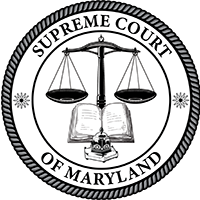In the United States, a state supreme court is the highest court in the state judiciary of a U.S. state. On matters of state law, the judgment of a state supreme court is considered final and binding in both state and federal courts.

The United States district courts are the trial courts of the U.S. federal judiciary. There is one district court for each federal judicial district. Each district covers one U.S. state or a portion of a state. There is at least one federal courthouse in each district, and many districts have more than one. District court decisions are appealed to the U.S. court of appeals for the circuit in which they reside, except for certain specialized cases that are appealed to the U.S. Court of Appeals for the Federal Circuit or directly to the U.S. Supreme Court.

The federal government of the United States is the national government of the United States, a federal republic located primarily in North America, composed of 50 states, five major self-governing territories, several island possessions, and the federal district and national capital of Washington, D.C., where most of the federal government is based.

The United States District Court for the District of Maryland is the federal district court whose jurisdiction is the state of Maryland. Appeals from the District of Maryland are taken to the United States Court of Appeals for the Fourth Circuit.

The Supreme Court of Maryland is the highest court of the U.S. state of Maryland. The court, which is composed of one chief justice and six associate justices, meets in the Robert C. Murphy Courts of Appeal Building in the state capital, Annapolis. The term of the Court begins the second Monday of September. The Court is unique among American courts in that the justices wear red robes.

The government of Maryland is conducted according to the Maryland Constitution. The United States is a federation; consequently, the government of Maryland, like the other 49 state governments, has exclusive authority over matters that lie entirely within the state's borders, except as limited by the Constitution of the United States.
The federal judiciary of the United States is one of the three branches of the federal government of the United States organized under the United States Constitution and laws of the federal government. The U.S. federal judiciary consists primarily of the U.S. Supreme Court, the U.S. Courts of Appeals, and the U.S. District Courts. It also includes a variety of other lesser federal tribunals.
The structure of the judiciary of Texas is laid out in Article 5 of the Constitution of Texas and is further defined by statute, in particular the Texas Government Code and Texas Probate Code. The structure is complex, featuring many layers of courts, numerous instances of overlapping jurisdiction, several differences between counties, as well as an unusual bifurcated appellate system at the top level found in only one other state: Oklahoma. Municipal Courts are the most active courts, with County Courts and District Courts handling most other cases and often sharing the same courthouse.
The Superior Court is the state court in the U.S. state of New Jersey, with statewide trial and appellate jurisdiction. The New Jersey Constitution of 1947 establishes the power of the New Jersey courts. Under the State Constitution, "'judicial power shall be vested in a Supreme Court, a Superior Court, County Courts and inferior courts of limited jurisdiction.'" The Superior Court has three divisions: the Appellate Division is essentially an intermediate appellate court while the Law and Chancery Divisions function as trial courts. The State Constitution renders the New Jersey Superior Court, Appellate Division the intermediate appellate court, and "[a]ppeals may be taken to the Appellate Division of the Superior Court from the law and chancery divisions of the Superior Court and in such other causes as may be provided by law." Each division is in turn divided into various parts. "The trial divisions of the Superior Court are the principal trial courts of New Jersey. They are located within the State's various judicial geographic units, called 'vicinages,' R. 1:33-2(a), and are organized into two basic divisions: the Chancery Division and the Law Division".

The Florida circuit courts are state courts and trial courts of original jurisdiction for most controversies. In Florida, the circuit courts are one of four types of courts created by the Florida Constitution.
The Unified Judicial System of Pennsylvania is the unified state court system of the Commonwealth of Pennsylvania.

The Alabama Circuit Courts are the state trial courts of general jurisdiction in the State of Alabama. The Circuit Courts have jurisdiction to hear civil and criminal cases. For civil cases, the courts has authority to try cases with an amount in controversy of more than $3,000 and has exclusive original jurisdiction over claims for more than $10,000. The Circuit Courts are the criminal trial courts for most felony charges, and for some misdemeanors and lesser included offenses. The Circuit Courts also have appellate jurisdiction over certain cases arising from the Alabama District Courts.

The High Court of Justice in London, known properly as His Majesty's High Court of Justice in England, together with the Court of Appeal and the Crown Court, are the Senior Courts of England and Wales. Its name is abbreviated as EWHC for legal citation purposes.
The Superior Court is North Carolina's general jurisdiction trial court. It was established in 1777 and is North Carolina's oldest court.
The District Court of Maryland is a state lower trial court in the state of Maryland. It enjoys limited jurisdiction over "minor issues," including over all landlord-tenant law cases, replevin actions, motor vehicle violations, misdemeanors such as disturbing the peace, and certain felonies. The District Court does not conduct jury trials.
United States v. More, 7 U.S. 159 (1805), was a United States Supreme Court case in which the Court held that it had no jurisdiction to hear appeals from criminal cases in the circuit courts by writs of error. Relying on the Exceptions Clause, More held that Congress's enumerated grants of appellate jurisdiction to the Court operated as an exercise of Congress's power to eliminate all other forms of appellate jurisdiction.
Business Courts, sometimes referred to as Commercial Courts, are trial courts that primarily or exclusively hear internal business disputes and commercial litigation between businesses. The modern creation of specialized Business Courts in the United States began in the early 1990s, and has expanded greatly in the last thirty years. Business courts are operating in New York City and 10 other jurisdictions throughout New York State as the New York Supreme Court Commercial Division, Chicago, North Carolina, New Jersey, Philadelphia and Pittsburgh, Pennsylvania, Reno and Las Vegas, Nevada, Massachusetts, Rhode Island, Maryland, Orlando, Miami, Ft. Lauderdale, and Tampa, Florida, Michigan, Cincinatti, Cleveland and Toledo, Ohio, Iowa, Maine, New Hampshire, Metro Atlanta regionally and Georgia Statewide, Delaware's Superior Court and Court of Chancery, Nashville, Tennessee, Wisconsin, Indiana, Arizona, Kentucky, South Carolina, West Virginia, and the Wyoming Chancery Court. This mapshows states having business courts either statewide, in multiple counties or cities, or within a single major city or county, which is accurate through April 2023. In New York, Chicago, Philadelphia, Massachusetts, North Carolina, South Carolina and New Jersey, among other states with business courts, the original programs have expanded by adding judges and/or by expanding into additional cities and counties. In 2023, Utah adopted legislation creating a statewide Business and Chancery Court, which will become operational in 2024. On June 9, 2023, Texas' governor signed an Act into law creating a Business Court. The new law became effective in September 2023, but the Business Court will not be open for cases until September 2024 at the earliest. The Hamilton County, Ohio Court of Common Pleas had discontinued its Commercial Docket in 2017, but revived it effective March 1, 2024.
The Florida State Courts System is the unified state court system of Florida.
The Judiciary of Virginia is defined under the Constitution and law of Virginia and is composed of the Supreme Court of Virginia and subordinate courts, including the Court of Appeals, the Circuit Courts, and the General District Courts. Its administration is headed by the Chief Justice of the Supreme Court, the Judicial Council, the Committee on District Courts, the Judicial Conferences, the Judicial Inquiry and Review Commission, and various other offices and officers.
The judiciary of Michigan is defined under the Michigan Constitution, law, and regulations as part of the Government of Michigan. The court system consists of the Michigan Supreme Court, the Michigan Court of Appeals as the intermediate appellate court, the circuit courts and district courts as the two primary trial courts, and several administrative courts and specialized courts. The Supreme Court administers all the courts. The Michigan Supreme Court consists of seven members who are elected on non-partisan ballots for staggered eight-year terms, while state appellate court judges are elected to terms of six years and vacancies are filled by an appointment by the governor, and circuit court and district court judges are elected to terms of six years.









